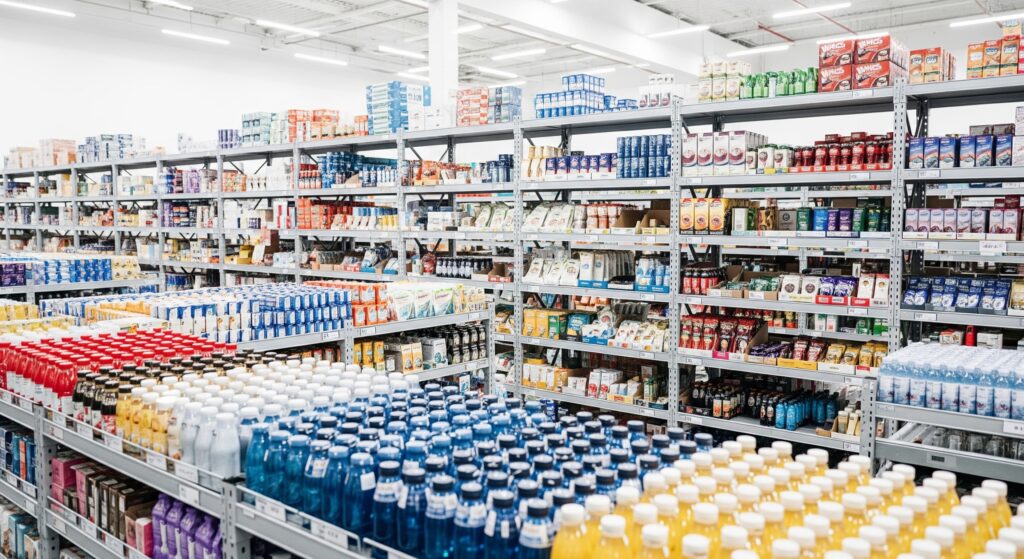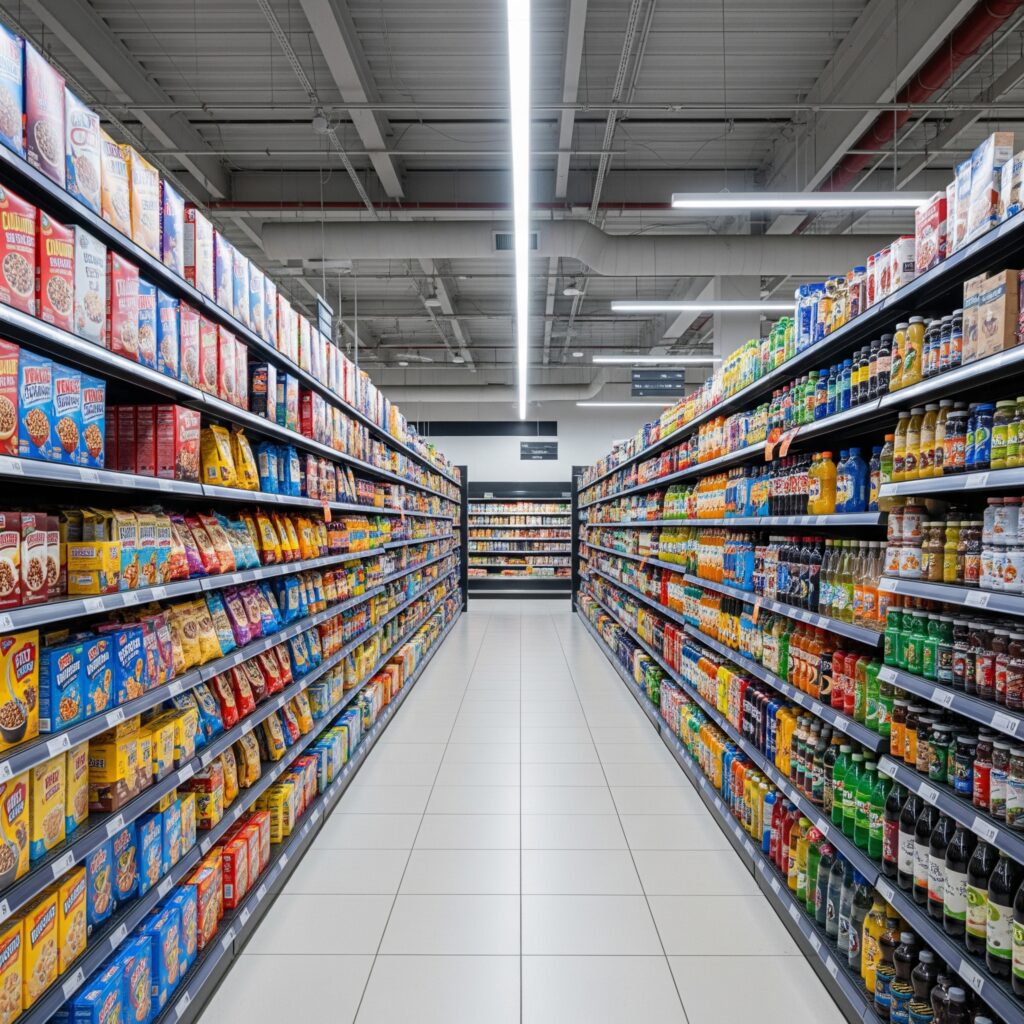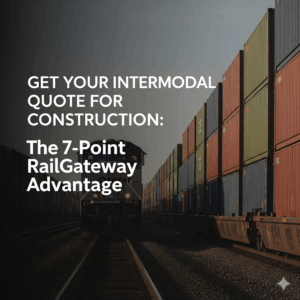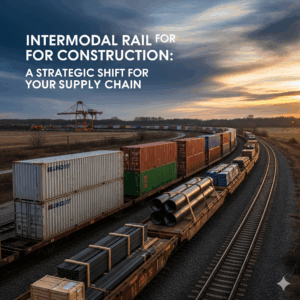The Immense Pressure on the Modern Retail Supply Chain
In the fast-paced world of Retail and Consumer Packaged Goods (CPG), the supply chain is the unsung hero. It is a complex, high-stakes network responsible for moving millions of products from manufacturing plants to massive distribution centers and ultimately onto store shelves or into e-commerce fulfillment centers. The pressures are immense: razor-thin product margins leave no room for error, demanding delivery windows from major retailers carry hefty financial penalties for failure, and massive seasonal demand swings can stretch any logistics network to its breaking point. For decades, long-haul trucking has been the default solution for keeping this vital engine running.
However, a deep reliance on this single mode of transport is creating significant challenges. Volatile fuel costs directly erode profitability, fierce competition for limited truck capacity during peak seasons leads to soaring rates and service failures, and growing pressure from both retailers and consumers is forcing brands to build more sustainable operations. To thrive in this environment, logistics leaders must look beyond the status quo.
This is where a strategic integration of intermodal rail shipping offers a powerful and proven solution. By combining the flexibility of trucks for short-haul pickups and deliveries with the immense efficiency of rail for the long-haul, CPG companies and retailers are building more resilient, reliable, and cost-effective logistics networks. This guide will explore 11 essential ways an intermodal strategy can directly strengthen your retail supply chain.
The Financial & Operational Core
For the CPG and retail sectors, every decision must be measured by its impact on the bottom line and operational efficiency. The most powerful arguments for an intermodal strategy lie in these foundational areas.
1. Dramatically Lowering Your Cost-Per-Unit
This is the number one driver for the CPG industry. When the margin on a single case of snacks or beverages is measured in cents, the cost of transportation can be the single biggest factor determining profitability. Intermodal rail shipping is structurally designed to attack this problem for high-volume, long-distance freight.
- The Economics of Scale: The core principle is simple: moving goods by rail is vastly more efficient over long distances than by truck. A single train can move the freight equivalent of over 280 trucks, but with a tiny fraction of the fuel and labor cost on a per-unit basis.
- A Classic CPG Lane Example: Consider a food manufacturer in the Greater Toronto Area shipping full containers of non-perishable goods to a major grocery retailer’s distribution center (DC) in Calgary. This long-haul lane is a perfect candidate for intermodal. The savings on the line-haul (the rail portion) and the much lower fuel surcharge can often result in an all-in cost saving of 15-25% compared to a through-truck.
- Protecting Your Margins: When you ship a hundred containers a month on that lane, a 15% cost reduction is not a minor tweak; it is a significant financial windfall that flows directly back to your bottom line. It gives you more room for promotions, more flexibility in pricing, and ultimately, a more profitable business.
2. Improving On-Time-In-Full (OTIF) Performance
In the world of retail logistics, OTIF is king. Major retailers like Walmart, Loblaws, and Costco have extremely strict requirements for on-time, in-full deliveries. Missing a scheduled delivery appointment by even a few hours can result in significant financial penalties, known as chargebacks, and can damage your supplier scorecard rating.
- The Power of Predictability: While a truck can sometimes be faster in a perfect scenario, its transit time is subject to high variability from highway traffic, weather, and other delays. This makes it difficult to guarantee arrival times for tight delivery windows at massive, congested Retail Distribution Centers (RDCs).
- Hitting the Appointment Window: Intermodal rail shipping excels by offering superior predictability. Trains run on fixed schedules, meaning the arrival of your container at the destination city is highly consistent. This reliability allows your logistics partner to schedule a delivery appointment with the RDC with a much higher degree of confidence. Knowing your container will be available for delivery on Wednesday morning makes it far easier to secure and hit a Wednesday afternoon appointment, helping you avoid costly chargebacks and maintain a positive relationship with your most important customers.
3. Securing Capacity for Seasonal Peaks
The CPG industry is defined by massive seasonal demand swings. Think of the surge in demand for beverages and snacks in the summer, for school supplies in late August, or for nearly everything in the fourth quarter leading up to the holidays. These peaks put immense strain on the trucking market.
- The Peak Season Trucking Challenge: During these periods, the demand for trucks far outstrips supply. This inevitably leads to a “surge pricing” environment where spot market rates can skyrocket by 30-50% or more. Worse, you may not be able to find a truck at any price, leaving your product stranded while your competitors’ products hit the shelves.
- The Intermodal Solution: A strategic intermodal plan is the solution to this cyclical problem. By working with a logistics partner, you can forecast your seasonal needs and contract for dedicated intermodal capacity well in advance. While others are scrambling on the volatile spot market, your capacity is guaranteed at a predictable, contracted rate. This ensures your product flows smoothly to distribution centers during the most critical selling seasons of the year, allowing you to maximize sales and market share when it matters most.

Sustainability & Network Benefits
While cost and operational efficiency are primary drivers, a modern retail supply chain must also be sustainable, secure, and seamlessly integrated with international trade routes. An intermodal strategy delivers powerful advantages in these areas, enhancing both your brand reputation and network performance.
4. Meeting Retailer & Consumer Sustainability Demands
Sustainability has rapidly evolved from a corporate buzzword to a fundamental requirement for doing business in the retail and CPG sectors. This pressure comes from two powerful directions: your largest customers and the end consumer.
- The Retailer Mandate: Major North American retailers, including Walmart, Loblaws, Target, and Costco, have made massive public commitments to reducing their carbon footprint. Initiatives like Walmart’s “Project Gigaton” actively encourage and measure the emissions reductions of their suppliers. To be a preferred supplier for these retail giants, you must now be able to demonstrate a commitment to a greener supply chain. Your logistics choices are a critical part of your supplier scorecard and can be a deciding factor in winning or retaining shelf space.
- The Conscious Consumer: Today’s consumers, particularly Millennials and Gen Z, are more informed and environmentally conscious than ever before. They actively research brands, read labels, and make purchasing decisions based on a company’s environmental impact. A brand that can legitimately claim to have a low-carbon supply chain has a powerful story to tell—one that builds brand loyalty and can justify a premium price point.
Intermodal rail shipping is one of the most impactful and easily verifiable ways to meet these demands. Shifting your long-haul freight from road to rail can reduce transportation-related greenhouse gas emissions by up to 75%. This provides a tangible, reportable metric that satisfies retailer requirements and gives your brand an authentic sustainability message to share with the world.
5. Reducing Product Damage and OS&D Claims
For CPG companies, product damage is a direct hit to the bottom line. Every crushed case of crackers or dented pallet of canned goods is unsellable inventory. This leads to costly and time-consuming Overage, Shortage & Damage (OS&D) claims with retailers, which can strain partnerships and create administrative headaches.
- The Problem with Multiple Touches: In many traditional logistics models, especially Less-than-Truckload (LTL), pallets are handled multiple times. They are loaded onto a local truck, unloaded at a terminal, cross-docked, loaded onto a long-haul truck, and potentially handled again before final delivery. Each “touch” is an opportunity for a forklift to damage a pallet, for a box to be dropped, or for packaging to be torn.
- The Intermodal Advantage: A Sealed Journey. Intermodal shipping drastically reduces this risk. Your pallets are loaded into a sealed container at your facility and are not touched again until the seal is broken at the final destination. This single-touch system, combined with the generally smoother ride of a train compared to a truck on a bumpy highway, significantly reduces the likelihood of in-transit damage. For CPG companies, this means higher product integrity, more sellable inventory arriving at the destination, and a welcome reduction in costly OS&D claims.
6. Streamlining Port-to-DC Movements for Imports
A vast percentage of consumer goods sold in Canada are imported, arriving in ocean containers at major ports like Vancouver, Prince Rupert, and Montreal. The journey from the port to your inland distribution center (DC) is a critical and often congested part of the retail supply chain.
- The Inefficient “Transloading” Model: A common but often inefficient practice is “transloading.” This involves trucking the ocean container to a warehouse near the port, unloading its entire contents, and then reloading the goods into a domestic 53-foot truck trailer for the long-haul journey inland. This process is labour-intensive, adds cost, creates product damage risk, and contributes to highway congestion around busy port areas.
- The Intermodal “Land Bridge”: Intermodal shipping offers a far more elegant and efficient solution. The intact, sealed ocean container can be lifted directly from the ship or dockside storage area and placed onto a train. This train then acts as a “land bridge,” moving the container seamlessly and cost-effectively across the country to an inland rail terminal in a major hub like Calgary, Winnipeg, or the Greater Toronto Area. From there, it’s just a short final drayage move to your DC. This process eliminates the costly and risky transloading step, reduces handling, and bypasses highway bottlenecks, ensuring your imported goods get into your distribution network faster and more reliably.
Practical & Strategic Advantages
Beyond the high-level benefits, an intermodal strategy offers a number of practical, on-the-ground advantages that can streamline your day-to-day operations and strengthen your overall network architecture.
7. A Natural Fit for Warehouse “Drop & Hook” Programs
Large, high-volume Retail Distribution Centers (RDCs) operate on a model of extreme efficiency. To avoid congestion at their docks, many mandate a “drop & hook” program. This means a driver drops their full container in a designated spot in the yard and immediately hooks up to an empty one to take away, without waiting for a “live unload.” This process maximizes the DC’s throughput.
The intermodal shipping drayage process is perfectly suited for this model. The drayage driver’s primary job is to shuttle containers between the rail terminal and your partner’s facility. They are not tied to a specific trailer for their next dispatch, making drop-and-hook operations incredibly fluid and efficient. This alignment with modern warehouse practices makes integrating intermodal into your retail supply chain a seamless operational fit.
8. Building a More Resilient, Diversified Network
The past few years have taught every supply chain professional a crucial lesson: relying 100% on a single mode of transport is a significant business risk. For the retail and CPG sectors, a disruption in the trucking network doesn’t just mean a delayed shipment; it means empty store shelves, lost sales, and customers choosing a competitor’s product.
By building a multi-modal network that strategically uses both road and rail, you create resilience. You are no longer solely vulnerable to trucking-specific issues like driver shortages, sudden fuel price spikes, or highway closures. An intermodal strategy acts as a form of supply chain insurance, providing a guaranteed pathway to market that keeps your products flowing and protects your valuable market share.
9. Consistent Transit for True Coast-to-Coast Reach
For national CPG brands and retailers in Canada, maintaining consistent inventory levels from British Columbia to Newfoundland is a major logistical challenge. A national product launch requires a coordinated, reliable distribution plan to ensure products hit shelves across the country at the same time.
The transcontinental rail network acts as a predictable “conveyor belt” for your goods. Its scheduled service provides a reliable and consistent transit time for moving products from manufacturing hubs in Central Canada to markets in the east and west. This consistency is crucial for national supply chain planning, allowing you to manage inventory and promotions on a truly national scale.
10. Reducing Local Congestion at Your Distribution Centers
A frequently overlooked benefit of an intermodal strategy is the positive impact it has on your own facilities. A busy DC can have dozens or even hundreds of trucks arriving and departing every day, creating significant yard congestion. This can lead to safety concerns, inefficient operations, and long wait times for drivers.
The math is simple: every intermodal container you receive represents three to four fewer long-haul trucks arriving at your gate. By shifting your long-haul volume to rail, you directly reduce the number of trucks entering your yard, easing congestion, improving safety, and making your entire receiving operation more fluid and efficient for all carriers.
11. Simplifying Your Logistics with a Single Partner
Managing a national distribution network using only trucking often means juggling relationships with dozens of different regional carriers to cover all your lanes. This leads to a complex web of contacts, varying service levels, and a mountain of invoices from different vendors.
Adopting an intermodal strategy with a dedicated partner like RailGateway simplifies this dramatically. You gain a single point of contact who manages the entire door-to-door move, regardless of the carriers involved. This means one call for tracking, one point of accountability for service, and one consolidated invoice for the entire shipment. This simplification of vendor management frees up valuable time for your logistics team to focus on more strategic initiatives.
Building a More Competitive Retail Supply Chain
In the hyper-competitive landscape of Retail and Consumer Packaged Goods, the companies that win are the ones that can master their supply chains. The ability to protect thin margins, reliably meet the demanding standards of major retailers, and build a brand that resonates with today’s conscious consumer are paramount. As we have explored, intermodal shipping is not just an alternative transportation method; it is a powerful, strategic lever for achieving these exact goals.
By integrating this cost-effective, predictable, and sustainable solution into your logistics network, you build a retail supply chain that is fundamentally more resilient and prepared for the future. You gain control over volatile costs, you enhance your performance as a supplier, and you create a more efficient and sustainable operation from end to end.
Is your retail supply chain built to handle the cost and capacity pressures of today’s market? Start a conversation with a RailGateway CPG logistics expert to explore how a multi-modal strategy can strengthen your network.
Speak With a CPG Logistics Expert Today
Get a free intermodal rail shipping quote for your retail and CPG freight/cargo today

Additional Resources:
Intermodal Rail Shipping with RailGateway – Learn more about RailGateway
Intermodal Rail Shipping for Retail & Consumer Packaged Goods – Learn how we can help
Get a Quote – Fast, no obligation quote
Blogs – Learn more
FAQ – Your frequently asked questions answered
Retail Council of Canada (RCC)





